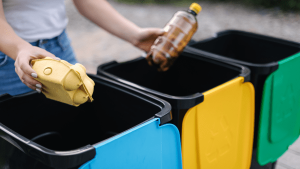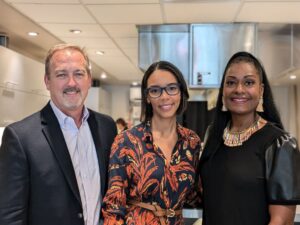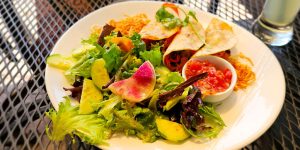Turning words into action in Toronto’s development space

Advertisement: Click here to learn how to Generate Art From Text
When Gord Downie, lead singer of the Tragically Hip, first heard the story of Chanie Wenjack, he wondered why he didn’t learn about residential schools when he was in school himself, shares Kayleigh O’Connor, who works for the Gord Downie & Chanie Wenjack Fund and comes from a family of Cree heritage.
After spending three years in Kenora, Ont. Wenjack fled to his family 600 kilometers away after three years at a Kenora, Ont. residential school. After a week of fleeing his body was discovered near railway tracks. He died from exposure and starvation.
“It was from a place of humility wondering why (Downie) hadn’t heard about Chanie Wenjack before, why he wasn’t taught about residential schools when he was growing up in Kingston, Ontario,” shares O’Connor. “And so he realized that if there was such a lack of knowledge on his part, this must be contributing to a lot of division and inequity for other people who also don’t know the real story of residential schools.”
The fund’s aim is to “build cultural understanding and create a path towards reconciliation between Indigenous and non-Indigenous peoples.”
Partnerships and Projects Committed to Reconciliation
In June 2023, the Gord Downie & Chanie Wenjack Fund in partnership with TAS Impact, an impact company based in Toronto, and the Walmer Road Baptist Church, located in the Annex neighbourhood of the city, launched their community “Legacy Space”: 38 Walmer Road.
“They had a mural installed outside, working closely with an Indigenous artist,” O’Connor adds. “They planted medicines and food in the garden out front that they were sharing and donating to Community Food Services. It’s a really special space.”
TAS Impact has released its Reconciliation Action Plan, which will be implemented in June 2024. Mazyar Mortazavi is the president and CEO of TAS Impact. This was a long-awaited moment.
“We have been exploring our relationships with our Indigenous partners for quite a number of years,”He comments. “(But) we believe that in the absence of measurement, it’s hard to actually measure progress and outcomes. So we felt that for us to really make a meaningful difference around the reconciliation initiatives, we needed to have a plan in place.”
Reconciliation Action Plan: Integrating Indigenous principles, worldviews & languages into real estate development
TAS Impact and Creative Fire, an Indigenous-owned communications and consulting firm, worked together for a full year to define the framework. Rather than a path that’s set in stone, they view the Action Plan as a living document.
Sean Willy, Aiden Mauti and Creative Fire are looking forward to the next steps after the Action Plan was released. Stewardship & Placekeeping is one of six pillars. It focuses on integrating Indigenous languages, worldviews, and principles into real-estate development projects.
“Indigenous architects in the country right now are starting to put their stamp on projects and you’re seeing more things like shared rooms, shared spiritual rooms, shared round rooms, shared smudging rooms,”Willy reflects on the situation.
Mauti anticipates an increase in demand for Indigenous architects as reconciliation practices are more common in development spaces.
“What we heard from the Indigenous architects we were working with is that there’s demand for about 500 Indigenous architects in Canada right now, and we have about five, so we have so little capacity,” Mauti comments.
You can also find out more about the following: ‘why’Being grounded in intentionality is a good thing.ig principle for many Indigenous groups
Ceremony is another pillar in the Action Plan. It can include elements such as site activation, land ceremonies, storytelling, and cultural events at development sites.
“To me, it’s a feeling, right?” adds Willy, who is also a band member of the Deninu Kųę́ First Nation of the Northwest Territories. “I’ve gone to some places that are very institutional, very cold, very 90-degree angles. But here when we’re doing our development plan, there’s a flow to it. It’s a holistic flow. Then you have these spaces. Safe spaces for ceremony, safe spaces for quiet time, safe spaces for connecting.”
Incorporating this pillar should go beyond aesthetic or visual appeal, in Mauti’s opinion.
“We really shouldn’t be doing this just for the sake of it,”Mauti says. “There’s a lot of intentionality behind (what we do), which is a big principle to a lot of Indigenous groups — making sure it’s well grounded in why we’re doing this.”
What does this mean for the city’s real estate development?
For Toronto’s real estate development space, this could mean taking a more holistic approach when it comes to designing both residential and commercial spaces.
“Our work is guided by a core belief that an ecosystem is far stronger than an isolated sort of element,” comments Mortazavi. “As we look at our buildings, when we can create a diversity of tenancies, we can allow them to collaborate and work together.”
Today, a year later, O’Connor still sees the positive impact at 38 Walmer Road. “People are really excited to have this in the community to learn from it and expand their view of Indigenous people,”She shares.
She sees a brighter future when it comes to creating spaces that encourage dialogue around reconciliation, and hopes that this can be carried forward into future Indigenous led projects across Canada.

‘ Credit:
Original content by realestatemagazine.ca – “Turning words into action in Toronto’s development space”
Read the full story at https://realestatemagazine.ca/reconciliation-turning-words-into-action-in-torontos-development-space/




